Lawn ryegrass
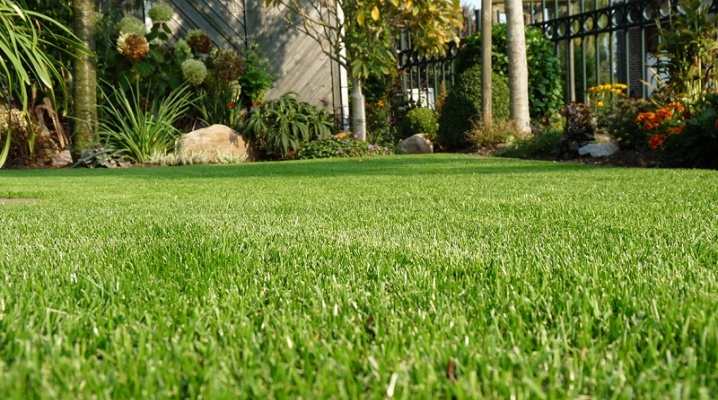
A well-groomed lawn emphasizes the beauty and decorativeness of the personal plot. When choosing plants for growing, it is necessary to pay attention not only to the aesthetic characteristics of the grass, but also to its resistance to external adverse influences - mechanical damage, drought, prolonged rains or sowing in the shade. Pasture ryegrass is considered one of the most unpretentious crops - it will be discussed in our review.

Description
Ryegrass is a herbaceous perennial of the cereal family. It is characterized by a high growth rate and, already in the first season after planting, forms an even carpet with a planting density of 40-60 units per square meter. Flowering occurs in June-September, the fruits are formed in August-October. Under optimal growing conditions, it forms a grass stand for 5-7 years.
Botanical characteristics of pasture ryegrass.
- Root system - powerful, branched. Forms a dense turf, due to which good soil consolidation is achieved.
- Height - up to 70 cm, in the lawn usually from 15 to 50 cm.
- Stem - upright, smooth.
- Sheet plates - elongated, narrow, taper towards the end. The length is 20-30 cm, the width is 3-5 mm. Painted in deep green. The surface is smooth, rough in the places where large veins pass. There is a small eyelet at the base.
- Inflorescences - solitary, formed at the ends of the shoots. They have the shape of a complex spike up to 10-15 cm long.
- Fruit - weevils.
Ryegrass is widespread as lawn grass. It is planted in playgrounds, tennis courts, football and basketball fields. As a rule, the crop content in the grass mixture is 20-60%. Most often, the plant is combined with fescue and bluegrass.
Ryegrass grows rapidly and is resistant to trampling. Already after 1-1.5 months after planting, it forms a green dense lawn. This grass successfully solves problems with soil shedding on hilly terrain and slopes. Due to the high density of the bushes, it does not let weeds through, and this is very important when decorating decorative and rolling lawns.
Ryegrass is pleasant to the touch, you can walk on it barefoot without fear of getting hurt or pricked. With proper care, perennial ryegrass will delight you with its appearance for many years. This grass will allow you to equip a full-fledged recreation area in the local area.
One-year ryegrass is often added to cheap grass mixtures. It quickly forms a beautiful green cover, but the next year it does not emerge - bald spots remain in its place. Be careful when buying and be sure to read all the information on the seed bag.
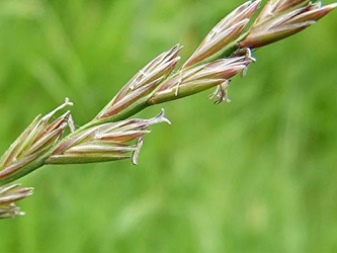
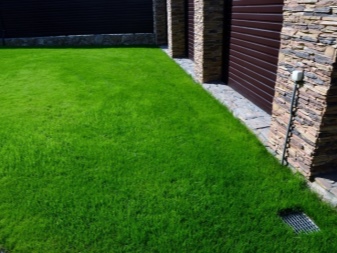
Pros and cons of using
It is necessary to carefully approach the design of a site based on ryegrass. Like any other culture, it has its merits and demerits.
The pluses include:
- resistance to trampling - even with intensive use, the grass retains its aesthetic appearance;
- high growth rate;
- the ability to strengthen the soil;
- resistance to prolonged rainfall, as well as short-term drought;
- the ability to successfully grow and develop on poorly fertile and depleted soils;
- the lawn can grow both in a sunny place and in shade.
Ryegrass is often planted as a siderat plant., since it improves the quality of the soil, enriches it with useful micro and macro elements.That is why the plant is often planted before planting vegetable and berry crops.
Minuses:
- despite the need for regular watering, do not be too zealous - excess moisture has a bad effect on the quality of the lawn;
- pasture ryegrass does not tolerate frosts well, therefore, after cold winters, additional over-sowing of grass may be required;
- limited period of use - after 5-6 years, the lawn needs restoration, usually this moment is compensated by the use of grass mixtures.
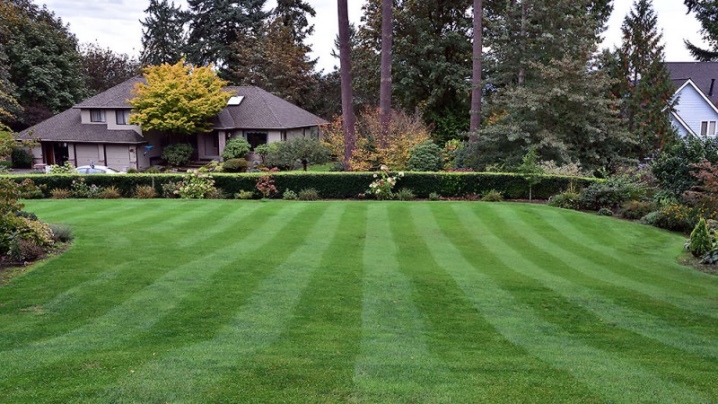
Species overview
The following types of ryegrass are distinguished.
- "Phoenix" - grows best in the central and northwestern regions of Russia. Already in the first year after planting, it forms creeping lush bushes.
- "Leningradsky" - cultivated in the north and northwest of Russia. An upright plant with light green foliage.
- Voronezh - differs in bushiness, gives a large number of shoots. Shows high resistance to cutting and mowing.
- "Cinderella" - undersized grass, grows back very slowly after mowing. Resistant to heat and temporary lack of irrigation.
Another varietal variety is widespread in agriculture - ryegrass "Westerwold"... It is used as a ground cover, gives a full vegetation in 2-3 mows. Refers to early flowering cereals. It has a high feed value, yields abundant green mass every year.
This crop is grown together with alfalfa for green fodder for farm animals and for hay.
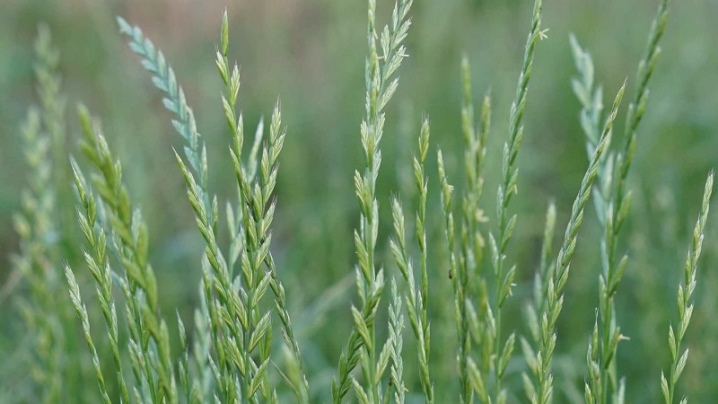
How to sow correctly?
Pasture ryegrass usually used as part of a grass mixture. It rises quickly and in a matter of days forms a dense dense herbage, contributing to the reduction of weeds. You can plant ryegrass seeds from early spring to October. The area for the lawn must first be cleaned of debris, stones, branches, all the stumps must be uprooted in advance and the remnants of the rhizomes of weeds must be removed. The prepared earth is dug to the depth of the shovel bayonet, all large lumps are split, after which the site is leveled with a rake and compacted.
The soil should be slightly damp before planting. Seeds are sown in even longitudinal and transverse furrows at the rate of 40-60 g of grass mixture per square meter of plot... In hot weather, the area should be thoroughly moistened with a drip method. Before the first shoots appear, it is important not to allow the soil to dry out, but it should not be poured either. Usually, the first shoots appear after 1-1.5 weeks.
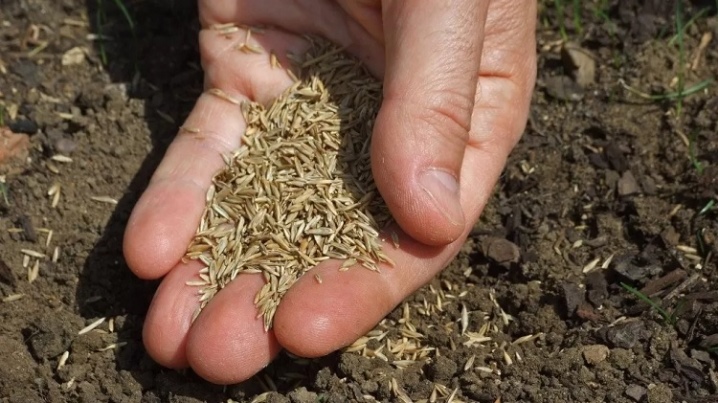
The nuances of care
Watering
Ryegrass requires regular watering, preferably drip... The ideal solution would be to install an automatic irrigation system. It will allow you to set the required humidification mode and thereby avoid both a shortage and an excess of water.
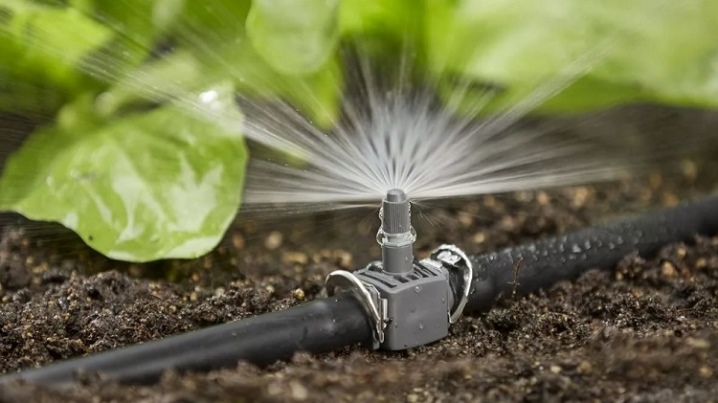
Top dressing and fertilization
Any lawn requires fertilizer and ryegrass is no exception. Top dressing not only gives the grass a beautiful rich shade, but also protects it from the action of pathogenic microflora. Ryegrass needs at least two additional dressings. In spring, plants need nitrogen, and in autumn, phosphorus-potassium fertilizers. When cultivating on poor soils during the growing season, you can additionally apply complex fertilizers.
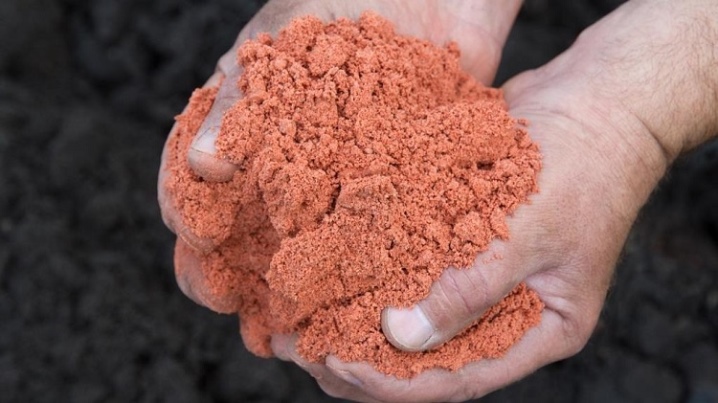
Winter hardiness
Ryegrass does not tolerate severe frosts, therefore, if severe frosts have been in the region for a long time, most likely, ryegrass will not rise in spring and will have to be sown. Moderate weather parameters are considered optimal conditions for wintering a crop. The root system of this plant can withstand frosts of at least -18 degrees. However, if the surface of the earth is protected by high snow cover, then the chances of preserving the lawn will increase many times over.
In winter, it is not recommended to walk on the lawn and it is strictly forbidden to flood a skating rink on it.
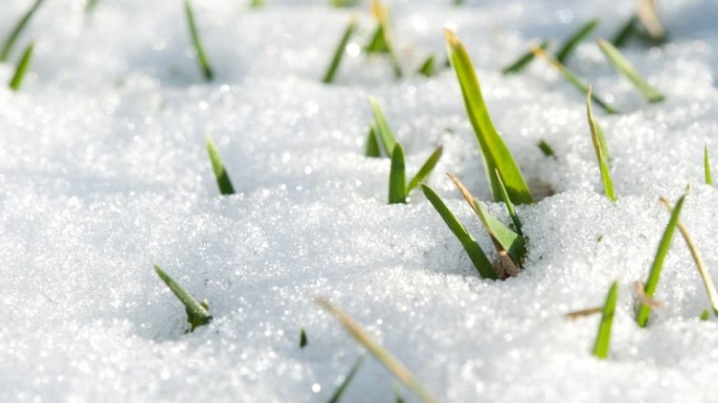
A haircut
Ryegrass does not like a low haircut, the minimum height of the bush should be 3-4 cm.More recently, new hybrid varieties have been developed in Europe that can withstand lower mowing. They are distinguished by their rich green color and high-quality grass.
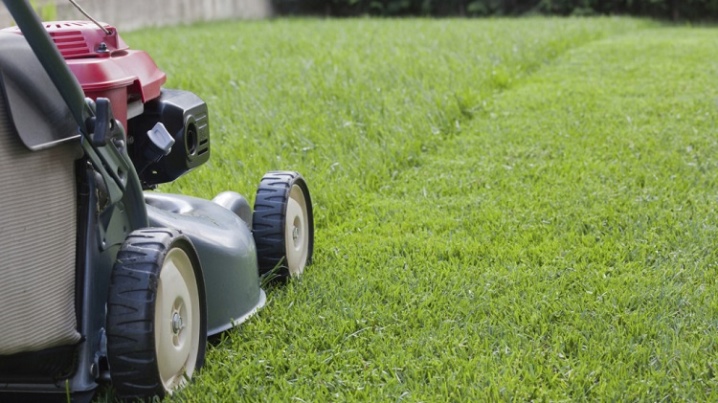
Diseases and pests
Ryegrass is a pest-resistant crop. Nevertheless under improper cultivation conditions, it can face fungal diseases - rot, powdery mildew, rust and fusarium. This happens especially often with excessive moisture. It is better to choose dry soils with a low water level for planting. If the lawn is grown on swampy soils, it is necessary to arrange high-quality drainage of the site, for example, to form small grooves around the perimeter. As a preventive measure, in early spring after the snow melts, you can spray the culture with solutions of copper sulfate or Bordeaux liquid.
Other reasons for the appearance of diseases include:
- lack of mineral dressings;
- lack of nitrogen;
- violation of the timing of fertilization or feeding in hot weather.
Irregular and rare mowing, as well as a lack of aeration, becomes a factor provoking the appearance of rot..
The wide demand for ryegrass when creating lawns in parks, squares and private household farms is explained by its decorative appearance, high growth rate and unpretentious care. With this plant, you can quickly green any garden area. Smooth grassy cover will delight its owners for many years with rich color and planting density.
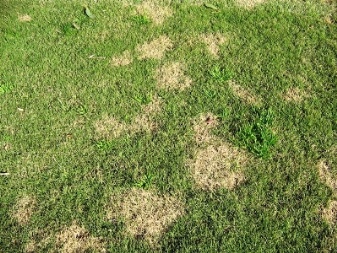
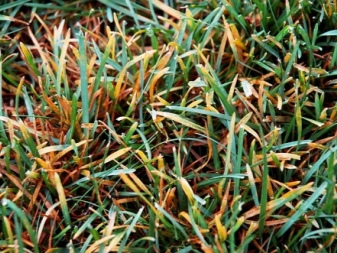
For information on how to choose a grass mixture for a lawn, see the next video.



































































The comment was sent successfully.